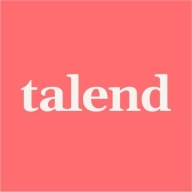

Talend Data Integration and webMethods.io are leading competitors in the data integration space. Talend shines in cost-effectiveness, while webMethods.io provides comprehensive functionality for complex integration needs.
Features: Talend Data Integration provides open-source access, a broad range of connectors, and real-time analytics, offering flexibility and adaptability. webMethods.io delivers standout cloud integration, IoT support, and seamless API management capabilities, making it suited for tech environments needing complex integrations.
Room for Improvement: Talend could enhance its responsiveness in customer support, offer more deployment options, and improve its integration with large data sets. webMethods.io might refine its UI for ease of use, improve its API governance without the need for additional modules, and reduce the learning curve for new users.
Ease of Deployment and Customer Service: Talend Data Integration offers a straightforward deployment process with initial setup support, but support responsiveness can be improved. In contrast, webMethods.io provides extensive deployment options suited for cloud-first strategies and robust customer service, prioritizing comprehensive support and complex deployments.
Pricing and ROI: Talend Data Integration is known for competitive pricing and lower initial costs, offering direct ROI in simpler environments. webMethods.io may have higher setup costs but can yield substantial ROI through optimized integration and scalability, appealing to companies ready to invest in extensive capabilities.
It has helped us save a lot of time by automating repetitive data processes and reducing manual interventions.
They didn't want to use separate ETL tools for MDM or for TMC and data preparation, which is all included in one package.
The support team is responsive when we raise issues, and they usually provide clear guidance or solutions.
The customer support for Talend Data Integration is very good; whenever I raise a ticket in the customer portal, I immediately receive an email, and follow-up communication is prompt.
By using features like job parallelization and modular design, we can expand our data flows without having to rebuild everything.
The scalability of Talend Data Integration is good; if it weren't scalable, it wouldn't be reliable.
Whenever more resources are needed, they become available automatically without any human interference.
Vertically, scalability is fine, however, I have not expanded horizontally with the product yet.
Once the jobs are properly designed and deployed, they run reliably without major issues.
There are some issues like the tool hanging or the need for additional jars when exposing web services.
We provide support to our clients, and the minimum calls I receive are for webMethods.io; it's very stable.
It would be great to have more ready-to-use connectors for modern cloud and SaaS platforms.
Talend Data Integration can be improved by reducing the license cost, as it is a bit high compared to other tools, which can be a burden for small-scale companies wanting to buy a license.
Regarding ETL, Talend Data Integration is great, but concerning real-time data processing, people are not really sure about Talend Data Integration or might not know how it provides such types of flexibilities.
webMethods.io lacks advanced monitoring and analytics capabilities, so my customers need to use something additional.
A special discount of at least 50% for old customers would allow us to expand our services and request more resources.
My experience with Talend Data Integration's pricing, setup cost, and licensing is that it is a bit higher compared to other tools, making it not very affordable.
Regarding the pricing and licensing of webMethods.io, I don't think it's expensive when compared with the features.
By automating daily data loading processes, we reduced manual effort by around three or four hours per day, which saved roughly 60 to 80 hours per month.
Flexibility is a key feature I appreciate about Talend Data Integration, especially the integration of Java within it and the ease of integrating with multiple source repositories such as GitHub and Bitbucket.
The best feature of Talend Data Integration is its multiple data DB components; we have almost all the components and also cloud versions, with TMC allowing us to perform data preparation and data stewardship.
It facilitates the exposure of around 235 services through our platform to feed various government entities across the entire country.
I believe data transformation is exceptional in webMethods.io because they have an online database that can cache the database online.
| Product | Market Share (%) |
|---|---|
| webMethods.io | 7.9% |
| Talend Data Integration | 1.4% |
| Other | 90.7% |


| Company Size | Count |
|---|---|
| Small Business | 2 |
| Midsize Enterprise | 2 |
| Large Enterprise | 4 |
| Company Size | Count |
|---|---|
| Small Business | 23 |
| Midsize Enterprise | 11 |
| Large Enterprise | 63 |
Talend Data Integration efficiently handles data transformation and integration with ease, supporting complex business needs. It enables seamless data management across all sources.
Talend Data Integration offers a robust platform for managing and transforming data. It connects disparate systems, enabling data flow across various environments. Users benefit from its ability to streamline processes and improve data accuracy. Its user-friendly interface and flexibility make it a preferred choice for data integration experts.
What are the key features of Talend Data Integration?In finance, Talend Data Integration enhances transaction data processing and compliance reporting. In healthcare, it ensures accurate patient data management, while in retail, it optimizes inventory and customer data analysis. Its adaptability makes it valuable across multiple sectors, addressing specific industry requirements.
webMethods.io Integration is a powerful integration platform as a service (iPaaS) that provides a combination of capabilities offered by ESBs, data integration systems, API management tools, and B2B gateways.
We monitor all Integration Platform as a Service (iPaaS) reviews to prevent fraudulent reviews and keep review quality high. We do not post reviews by company employees or direct competitors. We validate each review for authenticity via cross-reference with LinkedIn, and personal follow-up with the reviewer when necessary.